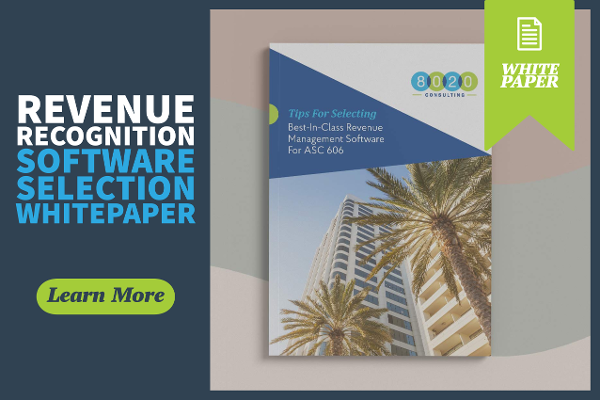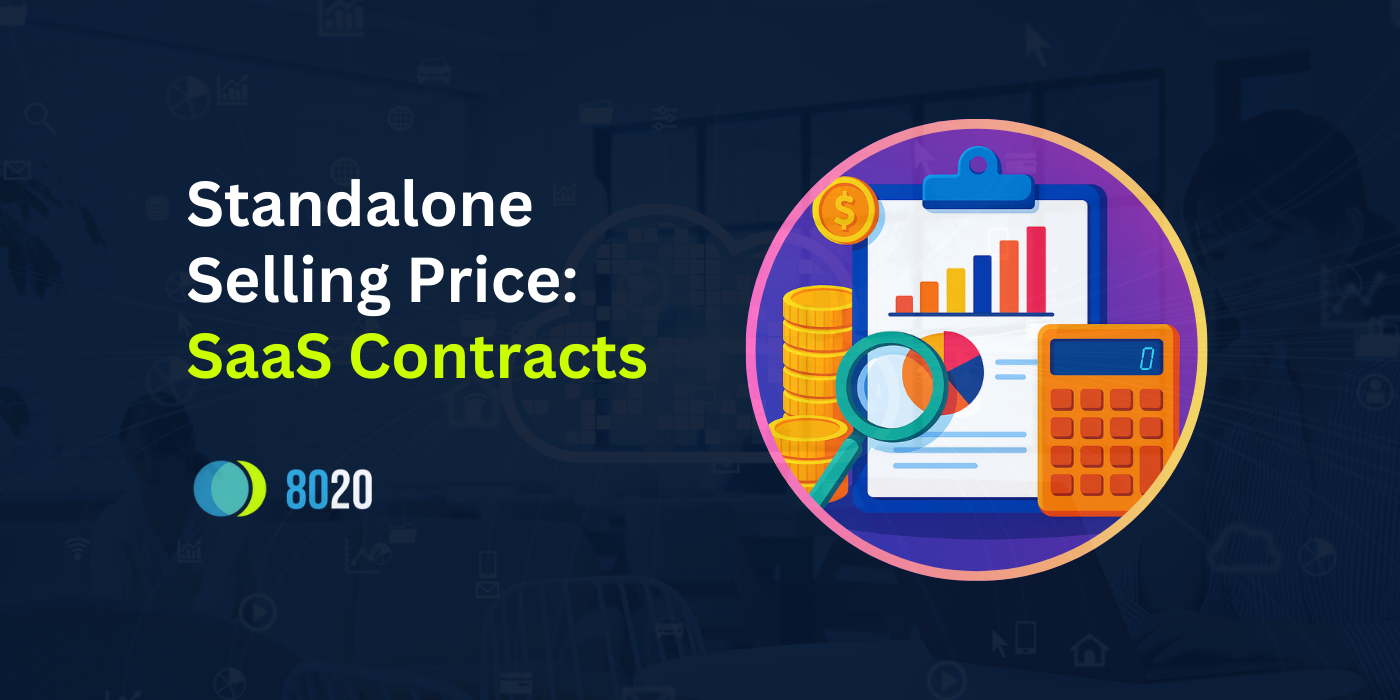Step 4 of ASC 606 requires an allocation of the total consideration in a contract to which an entity is legally entitled to collect to each distinct performance obligation. This allocation is determined based on the standalone selling price of each performance obligation in the contract, the process of which is comprised of two distinct sub-steps:
- Determine the Standalone Selling Price
- Allocate the Transaction Price
This article focuses on how to determine and allocate standalone selling prices (SSP) in SaaS contracts under ASC 606, specifically within Step 4 of the revenue recognition framework. It walks through practical methods and a real-world example to help accounting and finance professionals apply SSP concepts with confidence.
While this post provides a foundational understanding, it does not cover exceptions related to discounts or variable consideration, which can introduce additional complexity and will be addressed in a future article.
|
|
|
|
|
|
Key Takeaways
|
|
Table of Contents
What is a Standalone Selling Price?
The standalone selling price is the price at which an entity would sell a promised good or service separately to a customer. The best evidence of a standalone selling price is the observable price of a good or service when the entity sells that good or service separately in similar circumstances and to similar customers. A contractually stated price or a list price for a good or service may be (but shall not be presumed to be) the standalone selling price of that good or service. If a standalone selling price is not directly observable, an entity shall estimate the standalone selling price based on certain rules that require an entity shall consider all information (including market conditions, entity specific factors and information about the customer or class of customer) that is reasonably available to the entity.
Suitable Methods for Estimating Standalone Selling Price
When the standalone selling price of a performance obligation isn't directly observable, ASC 606 allows companies to estimate it using one of several accepted methods. Each method offers a structured way to approximate fair value, ensuring compliance while supporting accurate revenue allocation. Below are three commonly used approaches for estimating standalone selling price, starting with the Adjusted Market Assessment Approach.
1. Adjusted Market Assessment Approach
An entity could evaluate the market in which it sells goods or services and estimate the price that a customer in that market would be willing to pay for those goods or services. That approach also might include referring to prices from the entity’s competitors for similar goods or services and adjusting those prices as necessary to reflect the entity’s costs and margins.
The Adjusted Market Assessment Approach involves evaluating external market data to estimate the price customers would reasonably pay for each performance obligation. This method is most effective when there is accessible pricing information from either the company’s own past transactions or from similar offerings by competitors. It’s also useful when internal cost structures are well understood, allowing for informed adjustments based on margin targets.
To apply this method in practice, companies can:
-
Research market rates for comparable goods or services by analyzing competitor pricing, public benchmarks, or industry databases.
-
Adjust for internal cost structures by factoring in the company’s specific cost base, overhead allocation, and desired margin on top of the competitive price.
-
Segment by customer type when pricing varies significantly by industry, geography, or client size. This helps fine-tune the standalone selling price for different contract scenarios.
-
Document all assumptions and data sources, which is critical for both audit readiness and internal consistency.
This approach emphasizes external validation while still reflecting the company’s specific economics—making it especially valuable in competitive, price-sensitive markets like SaaS.
2. Expected Cost Plus a Margin Approach
An entity could forecast its expected costs of satisfying a performance obligation and then add an appropriate margin for that good or service.
The Expected Cost Plus a Margin Approach is an internally focused method that starts by forecasting the direct and indirect costs required to fulfill a specific performance obligation. From there, a reasonable margin is added to arrive at the estimated standalone selling price. This approach is particularly useful when external market data is limited or when services are highly customized.
To apply this method effectively:
-
Identify all relevant costs, including labor, materials, system usage, subcontracted services, and applicable overhead. Be sure to allocate shared costs appropriately based on usage or another rational basis.
-
Forecast these costs based on expected effort and duration, using either historical averages or input from service delivery teams.
-
Apply a consistent margin that reflects company goals, market expectations, and risk level. For instance, a higher margin might be justified for services involving more risk or specialized expertise.
-
Validate your margin using historical pricing or profit margin benchmarks from past deals, if available.
This method gives finance and accounting teams a high degree of control, and it aligns well with internal budgeting and cost analysis processes—especially when selling unique or evolving services.
3. Residual Approach
An entity may estimate the standalone selling price by reference to the total transaction price less the sum of the observable standalone selling prices of other goods or services promised in the contract. However, an entity may use a residual approach to estimate standalone selling price only if one of the following criteria is met:
- The entity sells the same good or service to different customers (at or near the same time) or a broad range of amounts (i.e., the selling price is highly variable because a representative standalone selling price is not discernible from past transactions or other observable evidence).
- The entity has not yet established a price for that good or service, and the good or service has not previously been sold on a standalone basis (i.e., the selling price is uncertain).

Let us refer to a sample SaaS transaction and walk through determining standalone selling price (SSP). In our example, an accounting and financial corporation sells SaaS-based accounting and financial cloud solutions:

Sub-Step 1: Determine Standalone Selling Price
Step 2 of ASC 606 requires identification of distinct performance obligations that have significant standalone functionality. The Distinct Performance Obligations identified in this contract are:
Annual Recurring Services
- Subscription to Core and User Modules – Fixed
- User License – Fixed or Variable
- Annual Support – Priced as a part of subscription
Professional Services
This is billed on a T&E basis.
Standalone Selling Price of Recurring Annual Services
The Core, Add-On modules and User License have significant standalone functionality as observed by renewals of such SaaS contracts. Annual Support related to hosting and security is never sold standalone and is often priced as a part of the subscription. Enhanced Support is often sold standalone as observed from subsequent renewals.
An analysis of the observable standalone renewal transactions reveals that the Core and the Add-On Modules have an SSP of $60,000 vs. the $49,000 (gross) value on the contract.
Professional Services
Professional Services for the accounting and financial corporation are often performed by third-party vendor partners.
The accounting and financial corporation performed an Adjusted Market Assessment Approach by performing a market analysis of hourly rates for similar services. This analysis revealed an SSP of $145 per hour.
Sub-Step 2: Allocate the Transaction Price
Once the SSP is determined, it will need to be reallocated to the performance obligations prior to any revenue recognition.

In our case, the $10,000 discount is reallocated between Annual Services and Professional Services based on their relative SSP ratio as above. The amount in the accounting unit is the amount over which Revenue Recognition would occur per ASC 606.
The above example is based on a relatively simple SaaS contract. Many complexities exist in today’s environment with hybrid SaaS contracts that involve an element of both License and Subscription services and other complex hosting arrangements. Further, usage-based SaaS contracts are becoming increasingly popular, sometimes with an element of both fixed and variable fee structures. Future discounts and other variable considerations can further complicate accounting.
Save Yourself the Stress on SSP Accounting & Contracts
Accurately determining and allocating the standalone selling price is a critical part of ASC 606 compliance—especially for SaaS companies with bundled services, variable pricing models, or hybrid contracts. While the accounting standard provides structure, applying it to real-world contracts takes a thoughtful mix of technical knowledge, financial modeling, and practical judgment.
Whether you're navigating renewals, setting up new contracts, or reassessing your revenue recognition framework, getting SSP right can save your team from costly rework, audit issues, or misstatements down the line.
At 8020 Consulting, our revenue recognition specialists bring deep experience in ASC 606, SaaS business models, and contract structuring. We help accounting and finance teams build defensible, efficient processes that meet compliance standards and scale with growth. Learn more about our technical accounting services here.
Ready to simplify your SSP analysis and strengthen your revenue practices? Book a meeting with our team to get started.
Learn More
If you’d like to learn more about ASC 606 specifics, you might be interested in reading these related blogs:
- Implementing ASC 606 Controls Under Pandemic Conditions
- Life Post-ASC 606 Implementation
- Post-ASC 606: Using Your CRM to Ensure Timely Billing
- Implementation of ASC 606 Revenue Standard: Financial Consulting Perspectives from the Field
We also offer a whitepaper to help you through the process of revenue software selection, which you can access by clicking the image below:

